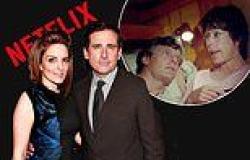On April 9, 1939 the African-American opera singer Marian Anderson made history when she performed outdoors on the National Mall in Washington.
The 42-year-old contralto sang to a crowd of 75,000 people. She performed outside because she had been barred from singing inside one of the more appropriate, and large-enough, venues in the city: Constitution Hall, a segregated building at the time.

Marian Anderson, the African-American contralto, sings on Easter Sunday 1939 at the Lincoln Memorial in Washington. Credit: Universal History Archive/Getty Images
Her powerful performance was written into civil rights history. She broke another barrier 16 years later when she became the first black opera singer to sing a role at the Metropolitan Opera in New York (Ulrica in Verdi's "Un Ballo in Maschera"). Anderson helped open a new landscape for black people in the genre -- as well as more generally in arts and culture -- across the world.

Beyoncé's 'Homecoming' doc on Netflix is black excellence
Her set, lasting more than an hour and half, was long and sprawling; and, while of course, not an opera performance, it was operatic in scope and power. She reinvented the space to create a new world, representing black history through historically black colleges and universities, drum lines, a black orchestra and a tightly choreographed group of black bodies signifyin' in formation.

Beyoncé performs onstage during the 2018 Coachella Valley Music And Arts Festival in Indio, California. Credit: Larry Busacca/Getty Images North America/Getty Images for Coachella
Since its inception at the end of the 16th century, opera has always been about spectacle, pageantry, and exploding boundaries. Opera is all about soaring and frequently high treble voices. While Beyoncé's voice doesn't do operatic things, there's an incredible virtuosity and an element of acrobatics in her singing.
While opera has stood the test of time with far more success than symphony -- a genre that now feels like dying art, nearly a museum piece -- the opera world is still a traditional space; It often lacks the self-assurance to use its standing to truly innovate. In contrast, Beyoncé sets the trends. I wish opera had the confidence to drive forward in this way. Besides opulent sets and putting pressure on young singers to be thinner and take their clothes off, we want a broader representation of stories told by a more diverse group of people. We want to feel represented. We want to feel a little "Homecoming" in the opera house.

The future of fashion: Complex, diverse, and more vocal than ever

This image shows the album cover for "X, The Life and Times of Malcolm X." Credit: Gramavision, Inc.
Despite the negative images of the past, in more recent times, something that I call a "Shadow Culture" has emerged. Anthony Davis is a great example of this: his 1986 opera "X, the Life and Times of Malcolm X," "Amistad" (1997), and "The Central Park Five" (which will open this June at the Long Beach Opera in California) are among the leading operas that tell new heroic stories about black experience. He is not alone. Nkeiru Okoye's opera "Harriet Tubman," and "Margaret Garner" -- the historical character on whom Sethe in Toni Morrison's "Beloved" is based (libretto by Morrison and music by Richard Danielpour) are just a few of the recent operas that bring important moments in black history to life on the opera stage.

The real power of 'pulling a Beyonce'
Fun fact: We have already seen Beyoncé within the context of opera, as the title character in "Carmen: A Hip Hopera;" an MTV adaptation of Bizet's 1875 opera, "Carmen." Her exceedingly prescient early role combined the hip-hop and the opera diva. It is not hard for me to see the maturation of this cultural sophistication in her work in "Homecoming."

Casey Lee and Beyoncé perform in "Carmen: A Hip Hopera." Credit: New Line Cinema
The idea of fandom is also important in opera. Audience interaction, clapping for a performer; this is all part of the experience, although, admittedly, modern audiences tend to be more refined. Historically, if you liked what someone did on stage, you clapped. Beyoncé's live album blends her adoring audience through each track. And the documentary frequently pans out to show the crowd, also moving down onto the faces of her fans, to show them singing and responding throughout the show.

Fans watch as Beyoncé perform in 2018 at Coachella. Credit: KYLE GRILLOT/AFP/Getty Images
Staging is another important pillar within the genre. The German theorist Carl Dahlhaus, in his writing about French Grand Opera in the 19th century, talks about the use of tableaux and shock. Tableaux is a term used to describe the living picture, created by the bodies of performers, arranged to depict a specific scene. Shock, in contrast, refers to a sudden outburst or moment of heightened drama. "Homecoming" features moments of pause and kinetic activity throughout. The tableau of the bleachers with the dancers, choir, orchestra, and band present a dynamic operatic set of pageantry and spectacle; the band's instruments and bodies are used to create shapes visible from a distance. The performers' costumes flickering from gold to magenta is an example of shock.

Beyoncé performs onstage in 2018 at Coachella. Credit: Kevin Mazur/Getty Images
Historically, female characters in opera were princesses, queens and royalty. As the genre modernized, more working class characters were written into the stories. Beyoncé oscillates between royalty -- "Queen Bey" -- and a more common or relatable character. In "Homecoming." she is a celebrity force, yet we also see a more well-rounded version of her that presents a critical, and too often unseen, image of a black woman who is also a wife and mother.
In opera, the fate of the female lead is almost never good. Women die in opera. It's a well-known plot convention and a truism in Romantic opera after 1830. But this is where the story is different, Beyoncé lives and triumphs. She breaks the rules and creates new conventions that provide a space for black women's voices to soar and open doors for those of us cheering in the audience. As with Marian Anderson, Leontyne Price, Shirley Verrett, Denyce Graves -- the list continues -- Beyoncé allows us to join in the harmony.
All rights reserved for this news site cnn and under his responsibility





